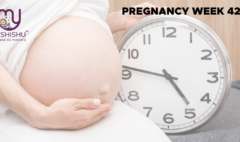Chorionic Villus Sampling in Pregnancy: A Reliable Guide
Chorionic Villus Sampling in Pregnancy: A Reliable Guide
Introduction
Welcome to a guide on the topic of Chorionic Villus Sampling in Pregnancy. As you embark on the remarkable journey of pregnancy, filled with anticipation, wonder, and perhaps a touch of apprehension, it’s natural to have questions and concerns about the various aspects of prenatal care. Chorionic villus sampling in pregnancy, a prenatal diagnostic procedure, may be one such area that piques your curiosity and prompts you to seek a deeper understanding.
In this guide, we’re here to walk alongside you, offering insights, information, and support as you navigate the intricacies of Chorionic villus sampling in pregnancy and its role in prenatal screening. Our aim is to provide you with clarity and peace of mind, empowering you to make informed decisions about your pregnancy and the health of your unborn child.
As you delve into the details of Chorionic villus sampling in pregnancy and its implications, remember that you’re not alone. Your healthcare provider, along with a supportive network of family and friends, is here to guide you every step of the way. So take a deep breath, trust in the process, and know that you have the strength and resilience to face whatever lies ahead.
Table of Contents
What is Chorionic Villus Sampling in Pregnancy?
Chorionic villus sampling (CVS) is a prenatal diagnostic procedure performed during early pregnancy to gather genetic information about the developing fetus. It involves the extraction of a small sample of tissue from the placenta, known as chorionic villi, for genetic testing. These villi contain genetic material that is representative of the fetus, allowing for the detection of chromosomal abnormalities and genetic disorders.
The procedure of Chorionic villus sampling in pregnancy is typically recommended between 10 to 13 weeks of gestation, offering an earlier alternative to amniocentesis for prenatal genetic testing. Chorionic villus sampling in pregnancy is often suggested for pregnant individuals who have an increased risk of genetic conditions or chromosomal abnormalities, such as advanced maternal age, a family history of genetic disorders, or abnormal results from other prenatal screening tests.
During Chorionic villus sampling in pregnancy, a thin needle or catheter is carefully inserted either through the abdomen (transabdominal CVS) or the cervix (transcervical CVS) to reach the chorionic villi. A small sample of tissue is then extracted and sent to a laboratory for genetic analysis. Results from the genetic testing can provide valuable insights into the health and development of the fetus, helping expectant parents make informed decisions about their pregnancy and potential medical interventions.
While Chorionic villus sampling in pregnancy offers the advantage of early detection of genetic conditions, it’s essential to weigh the benefits against the risks associated with the procedure. Your healthcare provider will discuss these considerations with you and help you determine whether Chorionic villus sampling in pregnancy is the right choice for your prenatal care.
Why is CVS Performed?
Chorionic villus sampling in pregnancy is performed for various reasons, primarily to detect genetic abnormalities or chromosomal disorders in the developing fetus. Here are some specific reasons why Chorionic villus sampling may be recommended:
- Advanced Maternal Age: Women who are 35 years or older at the time of delivery have an increased risk of having a baby with chromosomal abnormalities, such as Down syndrome. Chorionic villus sampling is often recommended for older mothers to assess the genetic health of the fetus.
- Family History of Genetic Disorders: If either parent has a known genetic disorder or there is a family history of certain genetic conditions, Chorionic villus sampling in pregnancy may be recommended to determine if the fetus has inherited the disorder.
- Abnormal Prenatal Screening Test Results: If other prenatal screening tests, such as non-invasive prenatal testing (NIPT) or ultrasound, indicate a higher risk of chromosomal abnormalities or genetic conditions, Chorionic villus sampling in pregnancy may be performed to confirm the results and provide more detailed genetic information.
- Previous Child with Genetic Disorder: If a previous child was born with a genetic disorder or chromosomal abnormality, Chorionic villus sampling in pregnancy may be recommended for subsequent pregnancies to assess the risk of recurrence.
- Parental Carrier Screening: In cases where both parents are carriers of a genetic condition, Chorionic villus sampling in pregnancy can be used to determine if the fetus has inherited the condition.
- Parental Anxiety or Concerns: In some cases, parents may opt for Chorionic villus sampling in pregnancy due to personal or familial anxiety about the possibility of genetic conditions, even in the absence of specific risk factors.
Overall, the decision to undergo Chorionic villus sampling in pregnancy is based on a combination of factors, including maternal age, medical history, family history, and individual preferences. It’s essential for expectant parents to discuss their concerns with their healthcare provider to make an informed decision.

Procedure for Chorionic Villus Sampling
The procedure for chorionic villus sampling in pregnancy involves several steps and typically takes place in a medical facility specializing in prenatal testing.
- Preparation: Before the procedure begins, you’ll have an opportunity to discuss any questions or concerns with your healthcare provider. It’s essential to inform them of any medications you’re taking, allergies you have, or medical conditions you’re experiencing. You may also receive instructions on fasting or emptying your bladder before the procedure, depending on the method chosen for chorionic villus sampling in pregnancy.
- Positioning: You’ll be asked to lie down on an examination table, typically in a gynecological or ultrasound room. Depending on the method of chorionic villus sampling in pregnancy chosen (transcervical or transabdominal), you may be positioned differently. For transcervical CVS, you’ll likely lie on your back with your feet in stirrups, similar to a pelvic exam. For transabdominal CVS, you’ll lie on your back, and your abdomen will be exposed.
- Ultrasound Guidance: Before the chorionic villus sampling in pregnancy procedure begins, your healthcare provider will use ultrasound imaging to locate the placenta and assess its position relative to your cervix or abdominal wall. This helps ensure accurate placement of the catheter or needle during the procedure and minimizes the risk of complications.
- Sample Collection: Once the placenta’s position is confirmed, your healthcare provider will proceed with collecting a sample of chorionic villi tissue. For transcervical CVS, a thin tube called a catheter is gently inserted through the cervix and guided to the placenta under ultrasound visualization. A small amount of tissue is then suctioned into the catheter and removed for analysis. In transabdominal CVS, a needle is inserted through the abdomen and guided to the placenta under ultrasound guidance. A sample of chorionic villi is then obtained by withdrawing the needle.
- Post-Procedure Monitoring: After the sample is collected, you may be monitored for a short period to ensure there are no immediate complications, such as bleeding or cramping. Your healthcare provider may perform a brief ultrasound to confirm the procedure’s success and check for any signs of distress.
- Aftercare: Following the chorionic villus sampling in pregnancy procedure, you may experience mild cramping or discomfort, similar to menstrual cramps. Your healthcare provider may recommend resting for the remainder of the day and avoiding strenuous activity. It’s essential to follow any post-procedure instructions provided by your healthcare provider and report any unusual symptoms or concerns promptly.
Overall, the chorionic villus sampling in pregnancy procedure typically takes around 30 minutes to complete, although this may vary depending on individual circumstances. Your healthcare provider will discuss the results of the CVS test with you once they become available and provide guidance on any further steps or follow-up care that may be necessary.
Benefits of CVS
Chorionic villus sampling in pregnancy offers several benefits for expectant parents, making it a valuable prenatal testing option in certain situations. Here are some of the benefits associated with chorionic villus sampling in pregnancy:
- Early Detection of Genetic Disorders: One of the primary advantages of chorionic villus sampling in pregnancy is its ability to detect genetic abnormalities and chromosomal disorders in the developing fetus early in pregnancy. Chorionic villus sampling in pregnancy can identify conditions such as Down syndrome (trisomy 21), Edwards syndrome (trisomy 18), Patau syndrome (trisomy 13), and various other genetic disorders caused by chromosomal abnormalities.
- Timely Decision-Making: By providing early diagnostic information about the fetus’s genetic health, Chorionic villus sampling in pregnancy allows expectant parents to make informed decisions about their pregnancy and plan for the future accordingly. This may include decisions about continuing the pregnancy, pursuing further diagnostic testing, or preparing for the challenges associated with raising a child with a genetic disorder.
- Reduced Anxiety: For couples considered to be at increased risk of having a child with a genetic disorder, Chorionic villus sampling in pregnancy can offer reassurance and peace of mind by providing accurate diagnostic information early in the pregnancy. This may help alleviate anxiety and uncertainty about the fetus’s health and allow parents to focus on enjoying their pregnancy experience.
- Personalized Healthcare: Chorionic villus sampling in pregnancy provides individualized diagnostic information tailored to each pregnancy, allowing healthcare providers to offer personalized prenatal care and support based on the specific genetic characteristics of the fetus. This personalized approach can help ensure that expectant parents receive the most appropriate medical guidance and support throughout their pregnancy journey.
- Early Intervention: In cases where a genetic disorder or chromosomal abnormality is detected through chorionic villus sampling in pregnancy, early diagnosis enables healthcare providers to implement timely interventions and medical management strategies to optimize the health outcomes for both the fetus and the expectant mother. This may involve additional monitoring, specialized medical care, or early intervention therapies designed to support the fetus’s development and well-being.
- Family Planning: For couples with a family history of genetic disorders or chromosomal abnormalities, chorionic villus sampling in pregnancy can provide valuable information for family planning purposes. Understanding the genetic profile of the fetus early in pregnancy allows parents to make informed decisions about their future reproductive choices and family planning goals.
Overall, the benefits of chorionic villus sampling in pregnancy extend beyond the diagnostic realm, offering expectant parents valuable insights into their pregnancy and empowering them to make informed decisions about their family’s future. While CVS carries certain risks and considerations, the potential benefits it offers in terms of early detection, personalized care, and family planning support make it a valuable tool in modern prenatal care.
After the Procedure
After undergoing chorionic villus sampling (CVS), it’s essential for expectant mothers to take proper care of themselves and monitor for any signs of complications. Here are some considerations and steps to take after the procedure:
- Rest and Recovery: Following CVS, it’s advisable for the expectant mother to rest and avoid strenuous activities for the remainder of the day. Some women may experience mild cramping or discomfort after the procedure, so it’s essential to listen to your body and give yourself time to recover.
- Monitor for Symptoms: While most women experience only mild discomfort or spotting after CVS, it’s essential to monitor for any signs of complications such as heavy bleeding, severe abdominal pain, fever, or fluid leakage. Contact your healthcare provider immediately if you experience any unusual symptoms or concerns.
- Avoid Intercourse: To reduce the risk of infection, it’s recommended to avoid sexual intercourse for at least 48 hours following CVS. This helps minimize the risk of introducing bacteria into the reproductive tract, which could potentially lead to infection.
- Stay Hydrated: Drinking plenty of fluids is essential after CVS to stay hydrated and help flush out any residual medication or tissue from the procedure. Aim to drink at least eight glasses of water per day to maintain hydration levels and support overall health.
- Follow-up Appointments: Depending on your healthcare provider’s recommendations, you may need to schedule a follow-up appointment to monitor your recovery and discuss the results of the CVS procedure. This is an opportunity to address any questions or concerns you may have and ensure that you’re receiving appropriate prenatal care.
- Emotional Support: Undergoing prenatal testing such as CVS can be emotionally challenging for some women and their partners. It’s normal to experience a range of emotions, including anxiety, worry, or stress, during this time. Seek support from your partner, family members, or healthcare provider if you’re feeling overwhelmed or anxious about the results of the procedure.
- Continue Prenatal Care: Following CVS, it’s crucial to continue attending regular prenatal appointments and following your healthcare provider’s recommendations for prenatal care. This ensures that you and your baby receive the necessary monitoring and support throughout the remainder of your pregnancy.
By following these post-procedure considerations and staying in close communication with your healthcare provider, you can help ensure a smooth recovery and minimize any potential risks associated with chorionic villus sampling. Remember to prioritize self-care and seek support if needed as you navigate this important phase of your pregnancy journey.
Additional Common Questions
-
Is chorionic villus sampling painful?
While discomfort during CVS is possible, it’s typically not described as painful. Some women may experience mild cramping or pressure during the procedure, but it usually resolves quickly afterward.
-
How long does the CVS procedure take?
The actual CVS procedure typically takes about 10 to 15 minutes to complete. However, expect additional time for preparation, discussion with your healthcare provider, and post-procedure monitoring.
-
Are there any risks associated with chorionic villus sampling?
While CVS is generally considered safe, there are some risks, including a small chance of miscarriage, infection, or vaginal bleeding. Your healthcare provider will discuss these risks with you before the procedure and monitor you closely afterward.
-
Can chorionic villus sampling detect all genetic abnormalities?
While CVS can detect many genetic abnormalities, it does not screen for all possible conditions. Your healthcare provider will discuss the specific genetic conditions that CVS can detect and may recommend additional testing if necessary.
-
Can I eat or drink before chorionic villus sampling?
Your healthcare provider will likely recommend that you avoid eating or drinking anything for a few hours before the CVS procedure to reduce the risk of nausea or vomiting during the test.
Conclusion
As you embark on this journey of pregnancy, it’s natural to encounter various medical procedures and tests aimed at ensuring the health and well-being of both you and your baby. One such procedure that may come up in discussions with your healthcare provider is chorionic villus sampling (CVS).
It’s understandable if the thought of undergoing CVS causes some apprehension or anxiety. After all, your primary concern is the safety and health of your baby. However, I want to reassure you that CVS, while it may seem daunting at first, is a valuable tool that can provide important insights into your baby’s genetic health.
Your health, as well as the health of your baby, is of utmost importance, and by staying informed and actively participating in your care, you’re taking proactive steps towards ensuring a healthy pregnancy and a positive outcome for both you and your little one.

want to know more
Explore Our Courses











